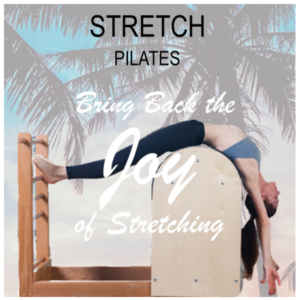Back Care Pilates
One of the most common reasons for a visit to the doctor is for low back pain. But don’t be surprised instead of prescribing medicine for the pain, the doctor may recommend you try Pilates or other exercises.
WHY NOT MEDICINE
If you have received an exercise prescription from your doctor, be assured your doctor is following the updated medical guidelines for back pain. Updated in 2017, the American College of Physicians recommend physicians not to prescribe medicine as the first line of treatment for back pain. Before patients are given anti-inflammatory medication or muscle relaxants, physicians should recommend patients try other therapies like exercise, acupuncture, massage therapy or yoga for the pain, the group said.
Dr. Nitin Damle, president of the group told the New York Times in a report, “We need to look at therapies that are non-pharmacological first. That is a change.”
The updated recommendations came as the United States and other wealthy nations faced an epidemic of opioid addiction. The addiction often started with a simple prescription of painkillers for ailments like back pain. The efficacy of painkillers in providing long-term relief is questionable. Instead, there has been an alarming rise in deaths from prescription drug overdose in developed countries. The problem has led many doctors around the world to reassess their prescription practices.
Back pain often resolved itself overtime, the medical group said in the report. As a result, physicians should reassure their patients that they would get better no matter what treatment they try.
WHY CORE EXERCISE
But for more chronic back pain that won’t go away, research shows core strengthening exercise is particularly helpful. Transversus abdominis as the name suggests is an abdominal muscle, located deep in the abdomen. The multifidus is located more posteriorly in the trunk and is a deep back muscle. TA and multifidus, along with the internal obliques, made up the trio, often referred to as the body’s core muscles. As core muscles are deep muscles of the trunk — located close to the lumbar spine — they play an important role in lumbar, as well as pelvic stability.
A 2011 study, published in the Manual Therapy Journal, highlighted the importance of the TA and multifidus muscles in particular, in preventing back pain. Patients with chronic back pain were 4.5 times weaker in the contraction of the TA and multifidus when performing normal activities, compared to individuals with no back pain, the study showed. Back pain corresponds with weak core muscles.
WHY PILATES
In the last two decades, there has been a growing body of research to suggest the benefit of core exercise in the reduction of back pain. Pilates is best known as an exercise to improve core strength. Clinical studies have shown the Pilates method of drawing the navel (or belly button) into the spine when performing an exercise is particularly effective in recruiting core muscles, and getting them to work. As a result, Pilates is often recommended as the go-to exercise when you have back pain.
Young men from 21 to 40 years old are most likely to take medical leave (MC) from work for back pain than the rest of the work force. More young men should do Pilates given the benefits of core exercise.
Pilates is a good exercise for all age groups and fitness levels. If you have back pain, instead of medication, why not try Pilates? Start today. Select from below the programme that best suits you:
Back Care Programmes

Pilates 1-to-1
Do you have back pain when you try to be more active? Or does your back hurt whenever you sit or stand more? Or you have a prior back injury and want to be more careful with the exercise. Try the Pilates 1-to-1 session for Back Care. What you will receive:
- A personalised Pilates session to suit your need
- Particularly helpful if you have specific tightness on the low back, hamstrings, hip flexors or calves and want to focus on the area/s
- Enjoy the different ways to stretch and lengthen your back muscles, while improving your core strength
- Improve sitting and standing posture
- Go slow on exercises you find difficult, speed up on exercises you find easy; exercise at a pace that suits you: good for beginners
- Access to Rehabilitation for pain relief, manual therapy is included in the session at no extra charge. See Back Care Manual Therapy for more details
Sign up for a trial today
(65) 6996 4396 today or sign up below

Back Care Manual Therapy
A key predictor of back pain is a prior injury. As a result, it is important to have a Back Care programme that offers Rehabilitation to loosen tension on the low back, and an exercise programme to strengthen. What you will receive from the 1-to-1:
- An assessment of the pain and range of motion
- Manual therapy to loosen tension on the low back: feel better
- Improve your back movement: bend over to pick up an item or extend your back to reach out for an item on the top shelf without pain
- Receive stretching exercises for the back which you can do at home
- Access to Pilates exercise to improve core strength for more long-term relief
- Instead of doing the same exercises, receive exercise progression so you could improve further; exercise without fear of re-injury
Sign up for a trial today
(65) 6996 4396 today or sign up below




 Pilates for NSmen
Pilates for NSmen
